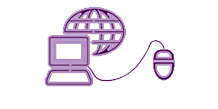It’s All in The Handwriting
Hello friends and welcome back to the blog! I hope that I am finding you well since my last post! Today we venture beyond the realms of genealogy records, trees, and research projects, into important skills we need to develop to increase are proficiency at extracting information from documents we may come across. Specifically, we will be looking at tips to increase our fluency in early 14th to 17th century writing.
As you know, before the dawn of the modern era everything was recorded by hand. With this comes unique handwriting of the recorder based in the foundation of written scripts of their day and their own individuality. Now depending upon the station of an individual they may have been taught to write in different scripts. A merchant may have written in round hand where the wealthy may have written in a Roman script. Thus, reading can be a quite daunting task.
Most experts recommend the best way to start building this skill is by attempting to read documents from the 19th century onward, then work backwards. This will provide you with the opportunity to familiarize yourself with older styles of English writing. By the time you work your way back to the 14th-17th centuries you feel less daunted by the complexities of English writing. It may be helpful to note that although scripts become more familiar, individuals may add their own distinctive flourishes and grammar, making a document harder to read. The best advice I can give is to compare and contrast symbols, letters, or numbers you are unsure with throughout the document. This can often lead you to instances within the passage where the writer was clearer, and thus you can more closely deduce in an area of uncertainty what the writer could have meant. Kip Sperry offers five helpful tips that you might want to keep in mind. One, don’t assume and always verify, two read slowly and make sure everything makes sense in context, three use high quality magnification tools, four identify individual letters and create an alphabet chart to help you more closely compare examples of each letter in the style, five, transcribe the document as written which might clear up any assumptions about the text later.
If you come across a document that is not written in English, do not fear! There are several resources that might help you make sense of the writing. Namely Script Tutorials by the Center for Family History and Genealogy at BYU can help you familiarize yourself with a new script. The United Kingdom’s National Archives also offers serval tutorials that are similar as well in Latin. There are also similar resources for Scottish and Danish. Other useful resources include: Babelfish, digital dialects, Google Translate, Livemocha, One-Step Webpages, WorldLingo, ParaLink, and if you are interested in stepping into the shoes of your ancestors and learning their language Italic. Similarly, the English you encounter might be so different that it may seem as if you are reading another language. The FamilySearch Wiki can help you find word lists and other language-English dictionaries that may help you decipher the texts you come across. Furthermore, you might want to consult different online resources that may help you decipher words and abbreviations used not in their current modern standardization. These include: The Record Interpreter, Family History books or historical Oxford dictionaries.
I hope that between my own tips and those of Sperry you will be able to go out and apply some of these principles towards documents that may not have been previously transcribed. Something that I have found helpful in building this skill is participating in indexing events. Whatever it is you do to practice this skill I know that in the long run you will thank yourself, as it will help you better understand the information you uncover during your research. If you are struggling with this or any other genealogy related tasks/skills (research, trees, locating records, etc.). please feel free to look through my previous blog posts and my webinars. My webinars may provide you with more in-depth information that my blogs do not. If there are other questions you have concerning your project specifically, do not hesitate to reach out and contact me. My contact information can be found at the top of this same website. Happy researching!
Winona I Laird “The Genealogy Granny”



